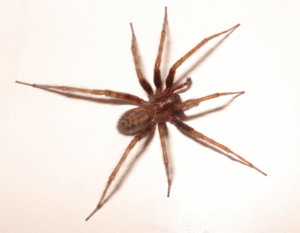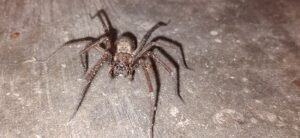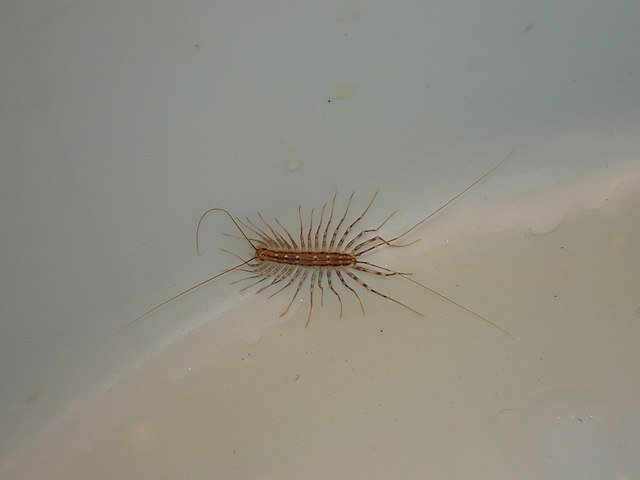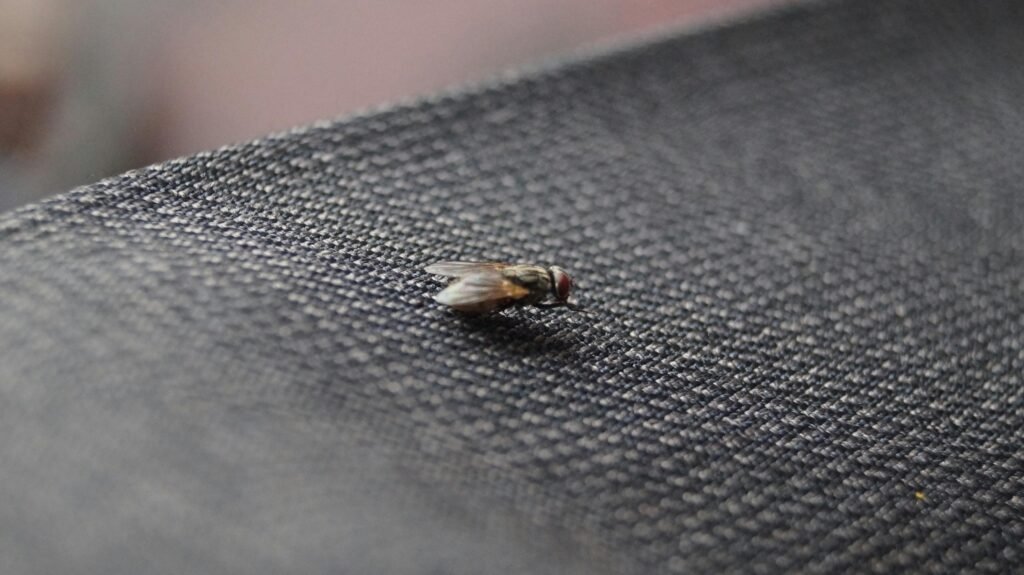House Spiders (Parasteatoda tepidariorum): Identification, Behavior & Control
 The House Spider (Parasteatoda tepidariorum) is one of the most widespread arachnids found in homes around the world. Often simply called the “common house spider,” this species is best known for its messy cobwebs in corners, windows, garages, and basements.
The House Spider (Parasteatoda tepidariorum) is one of the most widespread arachnids found in homes around the world. Often simply called the “common house spider,” this species is best known for its messy cobwebs in corners, windows, garages, and basements.
Unlike destructive pests such as Carpet Beetles (Anthrenus spp.) or Cigarette Beetles (Lasioderma serricorne), house spiders are not interested in fabrics, food, or stored goods. Instead, they build sticky webs to catch insects like Mosquitoes, Fruit Flies, and Fungus Gnats. In many ways, they serve as natural pest controllers inside the home.
Still, the unsightly cobwebs they weave and their sudden appearances in living spaces often make them unwelcome guests.
Identification of house spiders
Size: Females are 5–8 mm long; males are slightly smaller.
Color: Brownish or yellowish with a mottled pattern on the abdomen.
Legs: Thin and long, allowing them to hang upside down in their webs.
Webs: Tangled, irregular cobwebs found in corners, under furniture, or in garages.
Behavior: When threatened, house spiders may retreat into a hidden part of their web or drop to the floor and remain motionless.
Key Difference
House spiders are often confused with Cellar Spiders (Pholcidae), but cellar spiders have much longer legs and more delicate bodies.
Biology and Lifecycle of house spiders
 Egg sacs: Females produce round silk egg sacs, often attached to the web. Each sac contains dozens of eggs.
Egg sacs: Females produce round silk egg sacs, often attached to the web. Each sac contains dozens of eggs.Spiderlings: Hatchlings emerge within a few weeks and disperse to build their own webs.
Lifespan: House spiders can live up to a year indoors, sometimes longer in favorable conditions.
Reproduction: Females can produce multiple egg sacs during their lives, ensuring stable populations inside homes.
Ecology and Distribution
Global presence: Found worldwide, thriving in both temperate and tropical climates.
Indoor habitats: Windows, corners, closets, basements, garages, attics, and storage areas.
Outdoor habitats: Barns, sheds, under eaves, and in woodpiles.
Food source: Prey on small flying and crawling insects like Earwigs, Mosquitoes, Fruit Flies, and even Silverfish if they become trapped in webs.
Risks and Misconceptions
Bites: Rare and not medically significant. Their venom is mild.
Myths: Some people fear house spiders as dangerous, but they pose no health risks.
Nuisance factor: The main issue is aesthetic—webs accumulate quickly and make rooms look untidy.
Beneficial role: By catching flies, gnats, and other pests, house spiders act as a natural form of pest management.
Signs of Infestation
Numerous cobwebs in corners, ceilings, and around windows.
Egg sacs attached to webs or hidden surfaces.
Increased sightings of small brownish spiders in living spaces.
Presence of dead insects caught in webs, indicating active hunting.
Household Control
Regular cleaning: Remove webs with vacuum cleaners or dusters.
Exclusion: Seal gaps in doors, windows, and walls to reduce insect entry (less food = fewer spiders).
Lighting control: Reduce outdoor lighting that attracts Moths and Mosquitoes.
Reduce clutter: Fewer hiding spots mean fewer opportunities for webs.
Humidity management: Dehumidifiers can make basements less inviting.
Professional and Long-Term Control
Integrated Pest Management (IPM): Focus on controlling insect prey rather than the spiders themselves.
Chemical use: Rarely necessary, but residual insecticides may be applied in severe infestations.
Professional inspection: A pest control technician can determine if spider presence is linked to higher prey activity (e.g., Fruit Flies near drains, Fungus Gnats near plants).
Final Thoughts
The House Spider (Parasteatoda tepidariorum) is one of the most common arachnids found in human dwellings worldwide. While their webs may be messy and unsightly, they are not dangerous. In fact, they can even be beneficial by preying on nuisance insects such as Mosquitoes, Fruit Flies, and Fungus Gnats.
For homeowners, the solution is straightforward: routine cleaning, sealing entry points, and controlling humidity will keep populations under control. Professional intervention is rarely needed unless spider presence points to a larger underlying insect problem.
Ultimately, house spiders are more of a cosmetic issue than a true pest. Their presence is a reminder that ecosystems exist even indoors, where predators and prey continue their natural cycle.
FAQs About House Spiders
Q: Do house spiders bite humans?
A: House spider bites are very rare and not medically important. Their venom is mild and poses no threat to humans.
Q: How long do house spiders live?
A: Most house spiders live for about a year indoors, but some females can survive longer under stable conditions.
Q: Are house spiders dangerous to pets?
A: No. House spiders are not harmful to cats, dogs, or other pets.
Q: Why are there so many house spiders in autumn?
A: Males become more active in autumn while searching for females, which is why sightings increase during this season.
Q: How can I get rid of house spiders naturally?
A: Regular vacuuming of webs, sealing entry points, and reducing insect prey will lower their numbers without chemicals.
Disclaimer
This article is for informational purposes only. Pest control laws and approved chemicals vary by country. For best results and legal safety, we strongly recommend contacting a licensed pest control professional in your local area. Always make sure that the pest control technician is properly certified or licensed, depending on your country’s regulations. It’s important to confirm that they only use approved products and apply them exactly as instructed on the product label. In most places in Europe, UK, or USA, following label directions is not just best practice—it’s the law.
Author
Nasos Iliopoulos
MSc Agronomist & Certified Pest Control Expert
Scientific Director, Advance Services (Athens, Greece)
Licensed Pest Control Business – Ministry of Rural Development & Food (GR)
References
Wikipedia – Common House Spider
British Arachnological Society – House Spiders

 Egg sacs: Females produce round silk egg sacs, often attached to the web. Each sac contains dozens of eggs.
Egg sacs: Females produce round silk egg sacs, often attached to the web. Each sac contains dozens of eggs.
